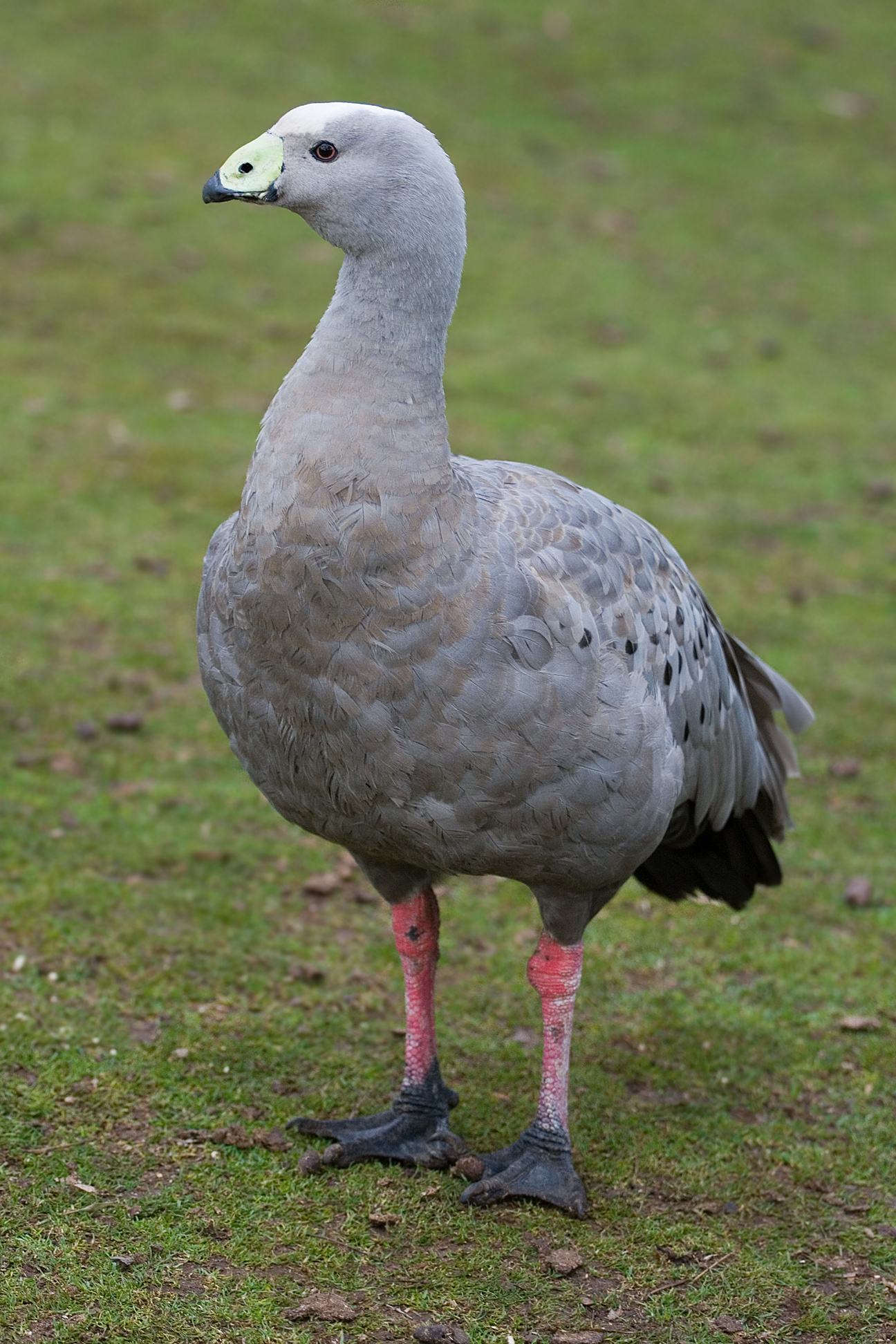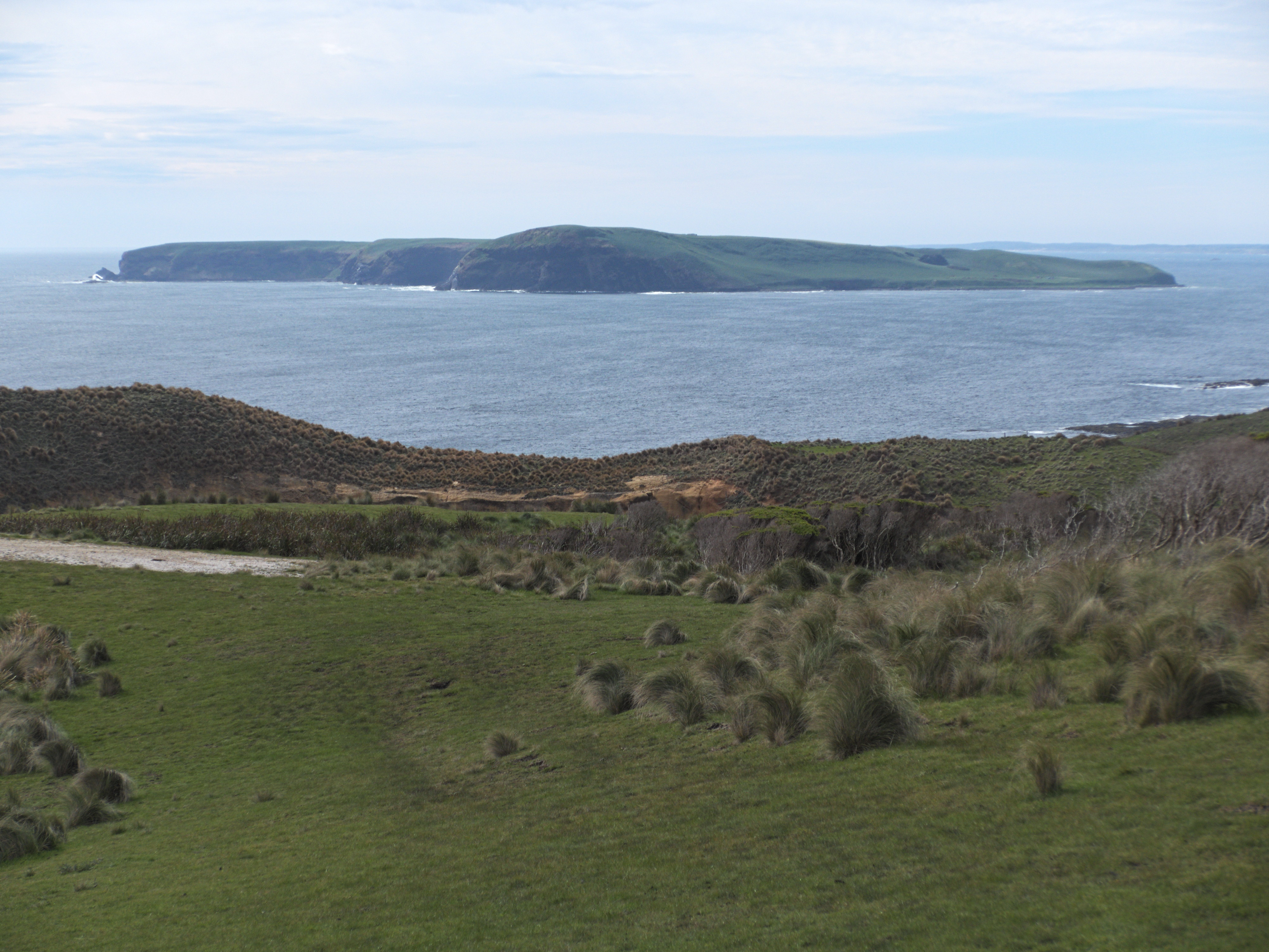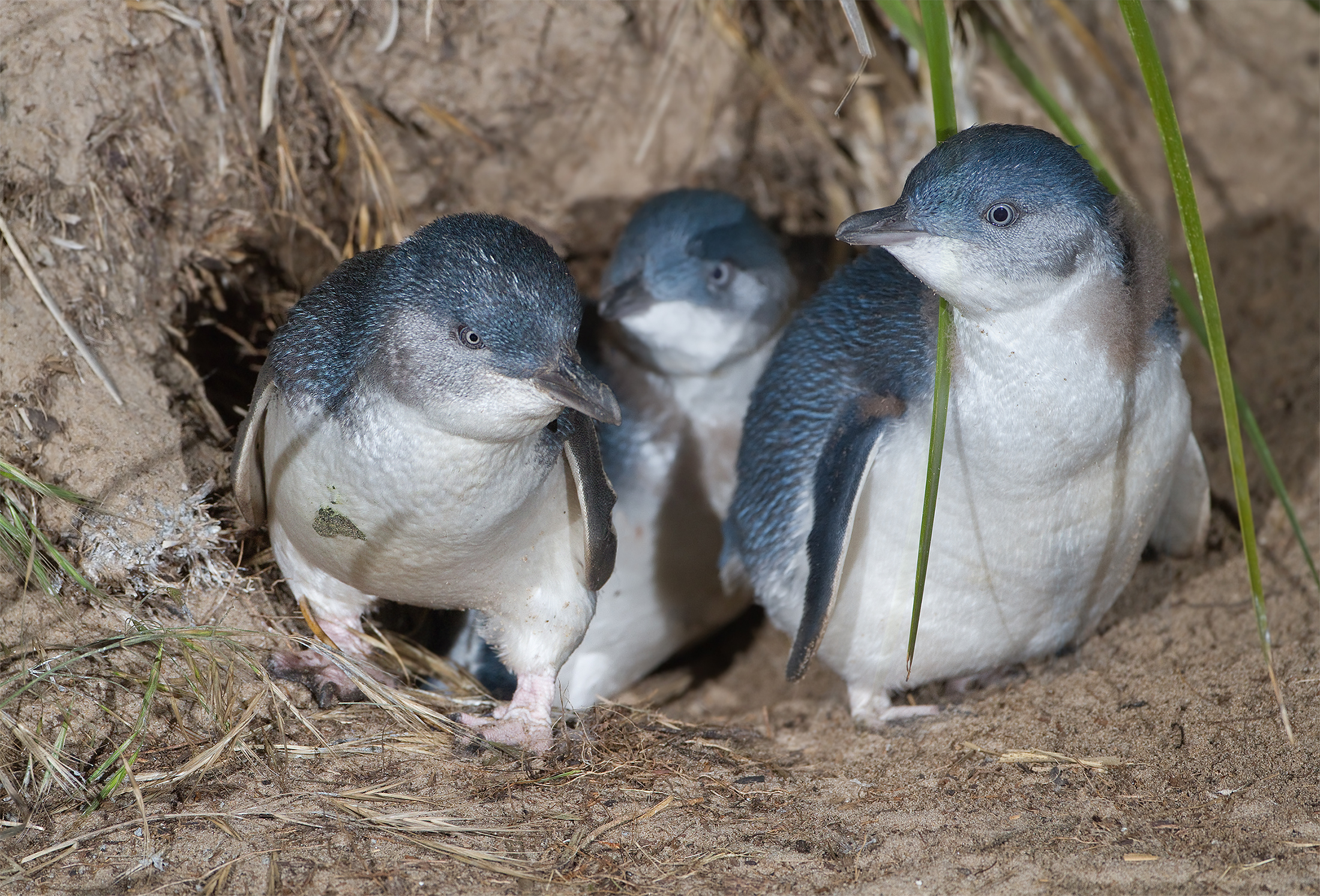|
Hunter Island Group Important Bird Area
The Hunter Island Group Important Bird Area comprises several islands in the Hunter Island Group and Trefoil Island Group lying off the north-western coast of Tasmania, Australia. Collectively, they have an area of 152 km2. They have been identified by BirdLife International as an Important Bird Area (IBA) because they support over 1% of the world populations of Cape Barren geese, short-tailed shearwaters, black-faced cormorants, sooty oystercatchers and Pacific gulls. The IBA also supports the critically endangered orange-bellied parrot on its migration route between Tasmania and mainland south-eastern Australia. Most of Tasmania's endemic bird species breed in the IBA. Hunter Island Group * Albatross Island, part of the Albatross Island and Black Pyramid Rock Important Bird Area * Bears Island * Bird Island * Black Pyramid Rock, part of the Albatross Island and Black Pyramid Rock Important Bird Area * Dugay Islet * Edwards Islet * Hunter Island * Nares Rocks ... [...More Info...] [...Related Items...] OR: [Wikipedia] [Google] [Baidu] |
Cape Barren Goose
The Cape Barren goose (''Cereopsis novaehollandiae'') is a large goose resident in southern Australia. Etymology The species' common name is derived from Cape Barren Island, where specimens were first sighted by European explorers. It is known in the local Jardwadjali language as ''toolka''. Taxonomy The Cape Barren goose was first described by English ornithologist John Latham in 1801 under the current binomial name. It is a most peculiar goose of uncertain affiliations (Sraml ''et al.'' 1996). It may either belong in the "true geese" and swan subfamily Anserinae or in the shelduck subfamily Tadorninae as distinct tribe Cereopsini, or be separated, possibly including the prehistorically extinct flightless New Zealand geese of the genus '' Cnemiornis'', in a distinct subfamily Cereopsinae. The first bones of the New Zealand birds to be discovered were similar enough to those of the Cape Barren goose to erroneously refer to them as "New Zealand Cape Barren goose" (''"Cereops ... [...More Info...] [...Related Items...] OR: [Wikipedia] [Google] [Baidu] |
Bears Island (Tasmania)
Bears Island is a small island with an area of 0.34 ha, lying off the north-west tip of Three Hummock Island in Bass Strait, south-eastern Australia. It is part of Tasmania’s Hunter Island Group which lies between north-west Tasmania and King Island. Fauna Breeding seabirds and shorebirds include little penguin The little penguin (''Eudyptula minor'') is a species of penguin from New Zealand. They are commonly known as little blue penguins or blue penguins owing to their slate-blue plumage and are also known by their Māori name . The Australian lit ..., common diving-petrel, Pacific gull and sooty oystercatcher.Brothers, Nigel; Pemberton, David; Pryor, Helen; & Halley, Vanessa. (2001). ''Tasmania’s Offshore Islands: seabirds and other natural features''. Tasmanian Museum and Art Gallery: Hobart. References Islands of Bass Strait {{Tasmania-geo-stub ... [...More Info...] [...Related Items...] OR: [Wikipedia] [Google] [Baidu] |
Little Trefoil Island
Little Trefoil Island is a small island with an area of 0.64 ha, in south-eastern Australia. It is part of Tasmania’s Trefoil Island Group, lying close to Cape Grim, Tasmania's most north-westerly point, in Bass Strait. Fauna The island forms part of the Hunter Island Group Important Bird Area.BirdLife International. (2011). Important Bird Areas factsheet: Hunter Island Group. Downloaded from http://www.birdlife.org on 2011-07-09. Breeding seabird and shorebird species include little penguin The little penguin (''Eudyptula minor'') is a species of penguin from New Zealand. They are commonly known as little blue penguins or blue penguins owing to their slate-blue plumage and are also known by their Māori name . The Australian lit ..., common diving-petrel, Pacific gull, silver gull and sooty oystercatcher. The metallic skink is present.Brothers, Nigel; Pemberton, David; Pryor, Helen; & Halley, Vanessa. (2001). ''Tasmania’s Offshore Islands: seabirds and oth ... [...More Info...] [...Related Items...] OR: [Wikipedia] [Google] [Baidu] |
Trefoil Island
Trefoil Island (in palawa kani : Titima), officially known as titima / Trefoil Island, is an island with an area of 115.79 ha, in south-eastern Australia. It is part of Tasmania’s Trefoil Island Group, lying close to Cape Grim, Tasmania's most north-westerly point, in Bass Strait. It is owned by the Trefoil Island Aboriginal Cooperative and is home to an estimated 1.5 million breeding pairs of short-tailed shearwaters, which are subject to annual muttonbirding activities. Approval is required to visit. There is an airstrip, otherwise small boats can be used on calm days at Kelp Beach. The shoreline is covered with pebbly rocks. Trefoil Island Group Trefoil Island Group consists of: * Trefoil Island * Harbour Islets * Henderson Islets * Little Trefoil Island * Murkay Islets * Seacrow Islet, aka Seacrow Island * Shell Islets * The Doughboys Fauna and flora The island forms part of the Hunter Island Group Important Bird Area. Apart from the short-tailed shearwaters ... [...More Info...] [...Related Items...] OR: [Wikipedia] [Google] [Baidu] |
Three Hummock Island
The Three Hummock Island, part of the Hunter Island Group, is a granite island, located in the Bass Strait near King Island, lying off the north-west coast of Tasmania, Australia. The island is named after its three most prominent hills, North, Middle and South Hummock, the latter being the highest with an elevation of above mean sea level. Part of the island is a nature reserve, with the rest a pastoral lease where farming took place from the mid-1800s to at least the mid-1970s. The focus of human settlement on the island is the homestead at Chimney Corner at the westernmost point. There is an automated lighthouse at Cape Rochon in the north-east, as well as roads, three airstrips, fencing and a wharf. Seasonal muttonbirding occurs in March and April.Brothers, Nigel; Pemberton, David; Pryor, Helen; & Halley, Vanessa. (2001). ''Tasmania’s Offshore Islands: seabirds and other natural features''. Tasmanian Museum and Art Gallery: Hobart. Flora and fauna Much of the is ... [...More Info...] [...Related Items...] OR: [Wikipedia] [Google] [Baidu] |
Stack Island
Stack Island is an island game reserve, with an area of 23.7 ha and a high point 54 m above sea-level, in Bass Strait, south-eastern Australia. It is part of Tasmania’s Hunter Island Group which lies between north-west Tasmania and King Island. Fauna The island forms part of the Hunter Island Group Important Bird Area.BirdLife International. (2011). Important Bird Areas factsheet: Hunter Island Group. Downloaded from http://www.birdlife.org on 2011-07-09. Breeding seabirds and shorebirds include little penguin, short-tailed shearwater, Pacific gull, silver gull, sooty oystercatcher, black-faced cormorant, crested tern and fairy tern. Mammals include small numbers of rabbits and rakali The rakali (''Hydromys chrysogaster)'', also known as the rabe or water-rat, is an Australian native rodent first described in 1804. Adoption of the Aboriginal name Rakali is intended to foster a positive public attitude by Environment Australi ....Brothers, Nigel; Pemberton, David; Pry ... [...More Info...] [...Related Items...] OR: [Wikipedia] [Google] [Baidu] |
Steep Island, Australia
Steep Island, also known as Steep Head, is a 21.6 ha island in Bass Strait in south-eastern Australia. It is part of Tasmania’s Hunter Island Group and lies between north-west Tasmania and King Island. It was once used for grazing sheep but title has been transferred to the Tasmanian Aboriginal community; with an estimated 250,000 shearwater burrows present, it is principally used for muttonbirding.Brothers, Nigel; Pemberton, David; Pryor, Helen; & Halley, Vanessa. (2001). ''Tasmania’s Offshore Islands: seabirds and other natural features''. Tasmanian Museum and Art Gallery: Hobart. Fauna The island forms part of the Hunter Island Group Important Bird Area.BirdLife International. (2011). Important Bird Areas factsheet: Hunter Island Group. Downloaded from http://www.birdlife.org on 2011-07-09. Breeding seabirds and shorebirds include little penguin, short-tailed shearwater, common diving-petrel, Pacific gull, silver gull, sooty oystercatcher and black-faced cormorant ... [...More Info...] [...Related Items...] OR: [Wikipedia] [Google] [Baidu] |
South Black Rock
South Black Rock is a small island with an area of <1 ha, in , south-eastern . It is part of Tasmania’s Hunter Island Group which lies between north-west Tasmania and . Fauna Breeding seabird and[...More Info...] [...Related Items...] OR: [Wikipedia] [Google] [Baidu] |
Penguin Islet (Tasmania)
Penguin Islet is a small island nature reserve with an area of 3.46 ha in Bass Strait, south-eastern Australia. It is part of Tasmania’s Hunter Island Group which lies between north-west Tasmania and King Island. It is notable as the only pelican colony in western Bass Strait. Fauna The island forms part of the Hunter Island Group Important Bird Area.BirdLife International. (2011). Important Bird Areas factsheet: Hunter Island Group. Downloaded from http://www.birdlife.org on 2011-07-09. Breeding seabirds and shorebirds include little penguin, short-tailed shearwater, fairy prion, common diving-petrel, white-faced storm-petrel, Pacific gull, silver gull, sooty oystercatcher, black-faced cormorant, Australian pelican and Caspian tern.Brothers, Nigel; Pemberton, David; Pryor, Helen; & Halley, Vanessa. (2001). ''Tasmania’s Offshore Islands: seabirds and other natural features''. Tasmanian Museum and Art Gallery: Hobart. References See also * Penguin Island (Tasma ... [...More Info...] [...Related Items...] OR: [Wikipedia] [Google] [Baidu] |
Nares Rocks
Nares Rocks are a group of three rocks with a total area of 0.76 hectare, ha in Bass Strait, part of Tasmania’s Hunter Island Group and lie between north-west Tasmania and King Island (Tasmania), King Island. They are steep and largely bare of vegetation. Fauna Breeding seabirds and shorebirds include common diving-petrel, Pacific gull, silver gull, sooty oystercatcher and black-faced cormorant.Brothers, Nigel; Pemberton, David; Pryor, Helen; & Halley, Vanessa. (2001). ''Tasmania’s Offshore Islands: seabirds and other natural features''. Tasmanian Museum and Art Gallery: Hobart. References Islands of North West Tasmania {{Tasmania-geo-stub ... [...More Info...] [...Related Items...] OR: [Wikipedia] [Google] [Baidu] |
Hunter Island (Tasmania)
The Hunter Island, the main island of the Hunter Island Group, is a island, located in Bass Strait, that lies between King Island and north-west Tasmania, Australia. The island is located near Three Hummock Island, several kilometres off the north-west coast of Tasmania. The island is run as a cattle property and there is a homestead on the island. A privately owned barge is used for transport to Smithton on the north coast of Tasmania. The island is approximately long, and wide at its widest point. The East India Ship ''Phatisalam'' was wrecked on the island in 1821. Hunter Island Group The Hunter Island Group includes: * Hunter Island * Albatross Island * Bears Island * Bird Island * Black Pyramid Rock * Dugay Islet * Edwards Islet * Nares Rocks * Penguin Islet * South Black Rock * Steep Island * Stack Island * Three Hummock Island Birds The island forms part of the Hunter Island Group Important Bird Area because it lies on the migration route of the critic ... [...More Info...] [...Related Items...] OR: [Wikipedia] [Google] [Baidu] |
Edwards Islet (Tasmania)
Edwards Islet is a small island with an area of 0.58 ha in Bass Strait, south-eastern Australia. It is part of Tasmania’s Hunter Island Group which lies between north-west Tasmania and King Island. Fauna Breeding seabirds and shorebirds include little penguin, short-tailed shearwater, common diving-petrel, Pacific gull, silver gull, sooty oystercatcher and Caspian tern The Caspian tern (''Hydroprogne caspia'') is a species of tern, with a subcosmopolitan but scattered distribution. Despite its extensive range, it is monotypic of its genus, and has no accepted subspecies. The genus name is from Ancient Greek ' ....Brothers, Nigel; Pemberton, David; Pryor, Helen; & Halley, Vanessa. (2001). ''Tasmania’s Offshore Islands: seabirds and other natural features''. Tasmanian Museum and Art Gallery: Hobart. References Islands of Tasmania {{Tasmania-geo-stub ... [...More Info...] [...Related Items...] OR: [Wikipedia] [Google] [Baidu] |






